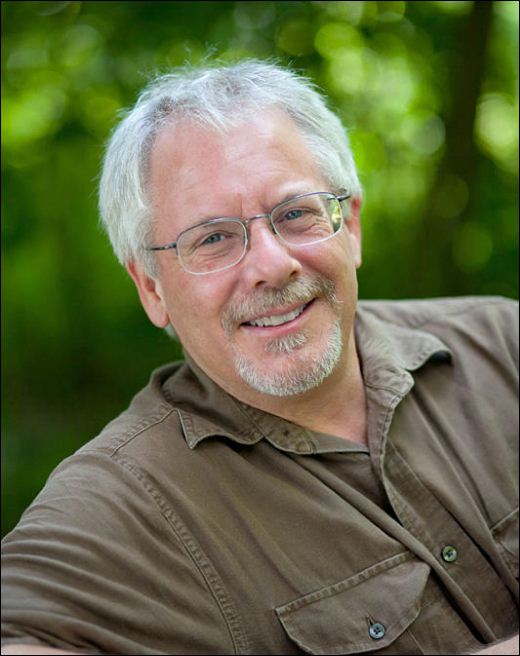It is always nice to start the new academic year on a bit of a high, not always easy given enrollment challenges, coping with an election that has lasted longer than some prime ministerial terms, and being bombarded with Gradgrindingly Wente-esque rants against the value of an Arts degree. For me, the high came twice: first, the numbers of prospective students who attended the annual Ontario Universities Fair at the end of September were actually up over last year. This year just shy of 133,000 students and parents braved the traffic jams occasioned by the Jay’s games to come to the Toronto Convention Centre. OUF provides an excellent opportunity to gain an appreciation of types of students that are attracted to higher education, and so serves as a very useful corrective to the understandable though potentially misleading tendency on the part of faculty and administrators to normalize the ‘student’ as someone who is like themselves back when they headed off to college.
The crowds at OUF are a telling sign of just how diverse the pool has become in terms of cultural, ethnic, and religious identification. Many of the potential students are not only first-generation Canadian but also first-generation university attendees. In talking with these students (and their families – parents are rarely absent from such discussions), I was repeatedly struck by the very instrumentalist or utilitarian view held about universities. Typical questions asked were, “What kind of career can my daughter expect after majoring in (fill in an arts major)?”
We have heard this question before – my own parents likely asked it – and the very slow, uneven, and incomplete recovery from the recession of 2007/8 no doubt has raised anxieties. But I also think that changing demographics are also at play – the parents and families of many of our prospective students came from countries where the liberal arts, broadly speaking, are not part of the educational system and hence do not enjoy the kind of cultural capital that they have here, however imperfect or under threat that may be. Consequently, in advocating for programs or research in the humanities and social sciences, we need to consider that more and more of our audience will not necessarily have any experience with or an attachment to the liberal arts and sciences at least as they have been conceived in Euro-American culture over the past 100 years or so. As an aside, I also found that more parents seemed to be asking me about what were the typical class sizes they could expect in first year than was the case five years ago when I first began to attend OUF regularly. Arguably, this is suggestive of the influence that Maclean’s and other rankings have had upon public expectations, namely the use of crude quantitative data to assess qualitative experience.
The second high was a two-parter and came about when issues of how universities can best engage with First Nations in developing appropriate and mutually respectful academic programs became the focal point of discussions at an impromptu meeting of the Council of Ontario Deans of Arts and Science, a topic which reappeared a week later as a major theme at the Canadian Association of Fine Arts Deans. It turns out that deans from across Canada have been as frustrated as me by the near-silence in this election on the important recommendations and insights generated by the Truth and Reconciliation Commission. I was delighted to see that there was a strong consensus across the country and across disciplines that this is truly an area where we can and should collaborate. I expect that this will be a key agenda item for future meetings and hope that the Federation and universities can work together on developing new and meaningful partnerships with Canada’s First Nations, Inuit, and Métis communities.
However, the high could not last. Deans from across the country (and in the US) are having to plan and budget around a demographic shift that we knew was coming but which we now appreciate contains some unanticipated or underappreciated shifts. Broadly speaking, the Baby Boomer Echo Generation has moved through higher education, and universities across North America are having to contend with a drop in the number of 18 to 20 year olds – our key market for prospective students. Anxiety has been compounded by the increasing use of Revenue-Centred-Management (RCM), sometimes known as Activity-Based-Budgeting (ABB) or (after a few drinks) Eat-What-You-Kill Budgeting, (EWYKB), as these models increase enrollment sensitivity. Great in times of growth, (why didn’t we have this ten years ago?) it is not so good when the needle is pointing the other way. I do not have data from across Canada, but understand that this pattern is fairly widespread. In Ontario, the number of 18-20 year olds peaked in 2010, and most forecasts peg 2031 as the year in which we return to 2010 levels. We are currently in the midst of the steepest rate of decline (2013-18) and so are bracing ourselves for some challenging years ahead. If we unpack the overall trend across the province, some relief is offered by the fact that Toronto and the GTA will start to rebound sooner than other regions, a boon to universities that have good pipelines into those communities. The other cautionary statistic that we have culled from the data provided by Ontario’s centralized application system that feeds into all Ontario universities is that the Arts’ share, broadly defined, of all applications has softened from 35% to 29%.
This takes me back to the point I made earlier, namely that we are not simply facing a drop in the numbers of prospective students, the demographic shift also contains a change in what they and their families conceive of as the purpose and characteristics of higher education. I wonder whether a more sustained engagement with the recommendations of the TRC report might help initiate some creative thinking and external engagement that would benefit us all.

